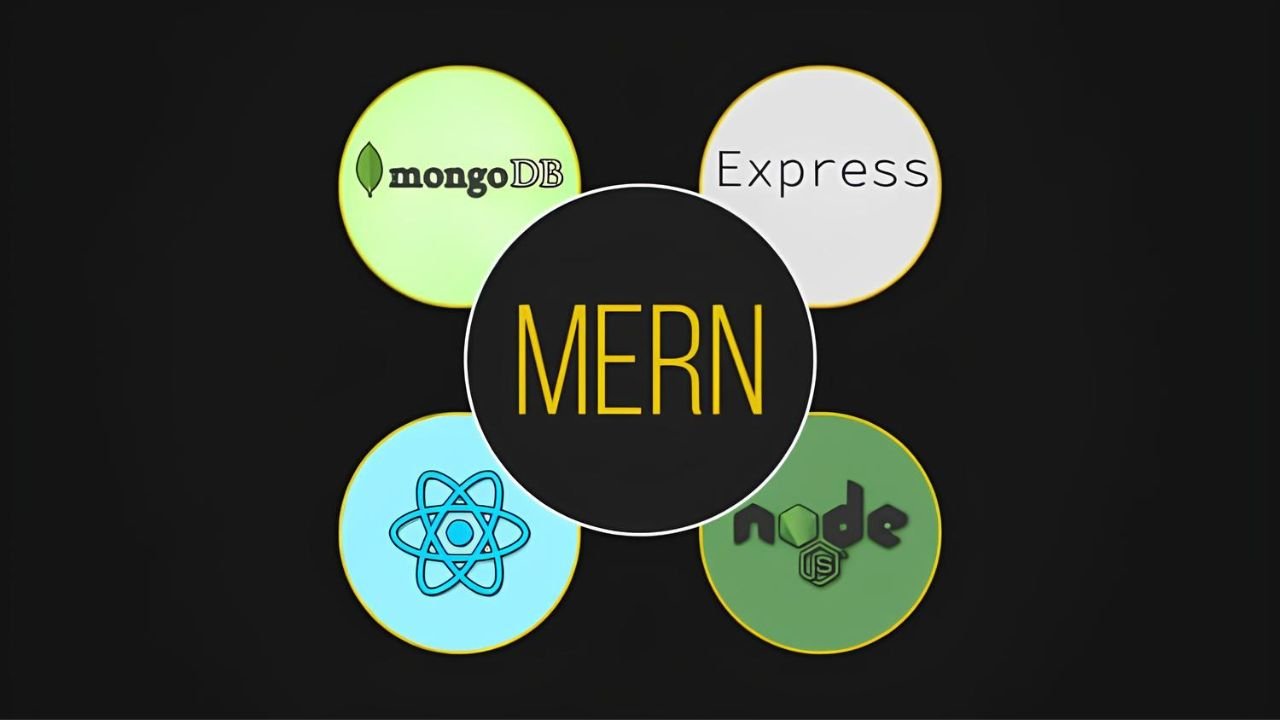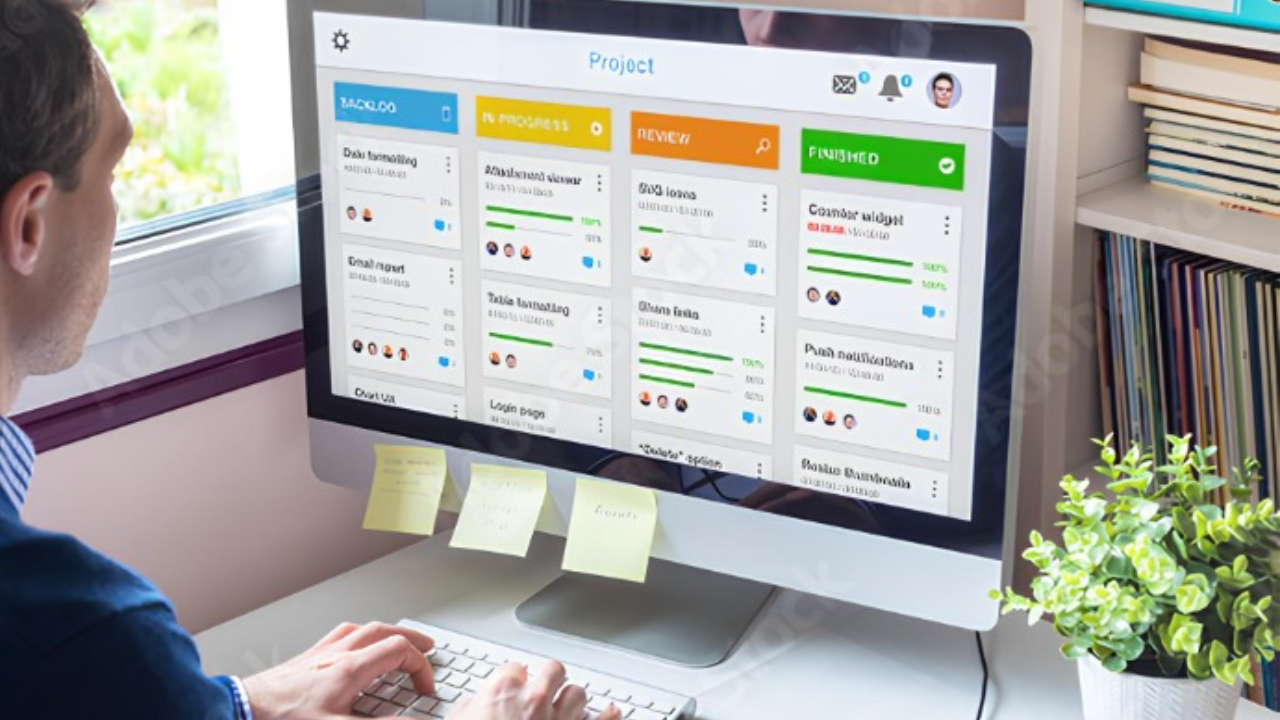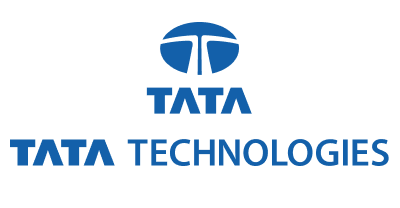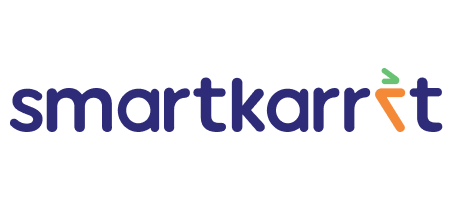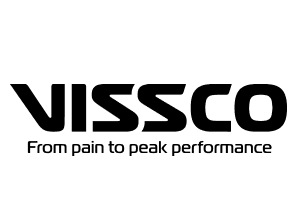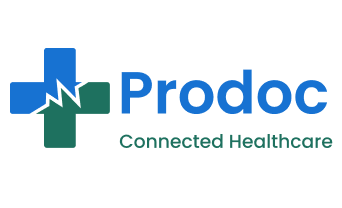The MERN stack is a well-accepted web development technology and has been roaring for the last couple of years. MERN stands for MongoDB, Express, React, and Node.js. This open-source technology put together forms a full-stack web development framework. In this article, we will look at the basics of MERN, its advantages, and how it can be used to develop a robust web application.
MongoDB is a NoSQL database for storing and managing huge data volumes. Express is the web application framework used in building web applications on top of Node.js. React is a JavaScript library for building user interfaces. Lastly, Node.js is a server-side JavaScript runtime environment for running JavaScript code. Together, these four technologies form the MERN stack, and it is very powerful and flexible in working on any kind of framework for Web development.
One of the major benefits derived from the application of the MERN stack is that developers can build web applications with a single language: JavaScript. By this, it implies that developers will just be using a single language for server-side and client-side development, thus saving them time and in effect reduction of confusion within the whole development process. The MERN stack also makes apps developed from it highly scalable and can be applied to build applications of any size or complexity.
What Is the MERN Stack?
The MERN stack is a popular web development stack that includes four main technologies: MongoDB, Express.js, React.js, and Node.js. All four are very important contributors to the process of web application building, when put together, they form one very powerful and effective stack for building advanced, scalable apps.
MongoDB is a type of NoSQL database, used quite widely for data storage in a document-oriented format. Being flexible and scalable, MongoDB is quite apt for being a storage source for web applications that require huge data storage. Express.js is a web application framework that provides an interface for building web applications using Node.js. It excels in providing a facile, user-friendly way to build web applications and APIs.
React.js is a JavaScript library intended for front-end development. React is efficient and flexible in building complex user interfaces for web applications. Finally, Node.js allows the running of server-side JavaScript conveniently with its runtime environment installed. It allows the creation of scalable web applications effectively and efficiently using the many excellent features and tools it possesses.
The MERN stack is powerful and effective for carrying out complex and scalable web applications. Every single one of these technologies within the stack plays a very important role in the development process. Combined, they mean a powerful set of tools that can be used to create a wide range of web applications.
Key Components of MERN Stack
MongoDB
MongoDB is a NoSQL database that carries a good amount of space in MERN stack development. It stores data in a flexible, almost JSON-like format which allows for very easy retrieval and manipulation of data. MongoDB is very scalable; it can handle big volumes of data, making it right for web applications that require a superior grade in performance and scalability.
Express.js
Express.js is a server-side framework in the MERN stack development. The popularity behind it is because it is built on top of Node.js, and it has a rich set of features that make it possible for you to build web applications. Express.js presents one very simple API to handle HTTP requests and responses, which makes things trivial when building RESTful APIs and web services.
React
React is a client-side JavaScript library that forms part of the MERN development stack. React is a framework for user interface development, supporting robust tools for building dynamic and interactive web applications. Thanks to its component-based architecture, React lets developers reuse code and build complex UI components with much more ease.
Node.js
Node.js is a server-based JavaScript runtime, using MERN stack bundle development for the provision of a means to develop scalable server-side applications that are effective and efficient. Node.js is built over the V8 JavaScript engine, and it allows for a powerful set of features for web application development, which includes both event-driven I/O and non-blocking I/O.
The components of MERN stacked together demonstrate a very strong and flexible mechanism for developing web applications. Thus, with the advantages of MongoDB, Express.js, React, and Node.js filtered through MERN Stack, developers can build scalable and high-performance web applications to meet modern businesses.
Setting Up the MERN Environment
Logging in to the MERN environment involves the following steps: Firstly, It is necessary to have MongoDB and Node.js present in the system.
Once Node.js and MongoDB are installed, he just has to create a new directory for his project and from the command prompt or terminal, navigate into it. He can then create a new Node.js project by simply running npm init and following the options appearing, contributing to the creation of the package.json file.
Next on the list is to install other dependent packages which a project needs like for instance, Express, React, and their needful packages; a command is given to the effect by executing, npm install package-name, or better still, after creating a project, installing it through npm and appending a package name along with its version from an already created project through the execution of npm install.
Then the user builds all the project files: server.js – Express server, index.html – the user’s React front end, and sets up the necessary Express server routes and controllers to begin constructing the required React components.
So overall, setting up the MERN environment requires just a bit of a basic understanding of Node.js, MongoDB, Express, and React. Maybe a bit of familiarity with the command line and package management is needed, but let a user have these tools and, with a good outline of what your project requires, they’ll likely be able to get that MERN stack application running within a snappy, happy manor.
Building a Basic MERN Application
MERN (that is, MongoDB, Express, React, Node.js) application development requires the following steps. First and foremost, you have to install Node.js, MongoDB, and your favorite text editor. Secondly, develop a new Node.js project and install all the requirements needed for development. Third, with the complete setting up of an environment and running it properly, it’s high time one develops the backend with the configurator of Express handling its routes and MongoDB serving as a database.
The backend will be created with Express and connected to the MongoDB database. One is supposed to write multiple routes and controllers that will be responsible for handling requests and responses. The backend should be tested using Postman or any other API testing tool.
In addition to this, you need to create the front end of the system with React. This can be done by initializing a new React project and installing dependencies relevant to the project. Once installed, you can start creating the front end by just building your components and communicating with the back end to drive different functionalities with Axios or any other HTTP client library.
So, one should test the application by running their backend and frontend server, and the application being fully functional and responsive in a web browser.
This means that in setting up the very basics for a MERN application, one will have to set the environment, backend, and frontend, and then test the application to ensure that it runs as expected. In other words, the above-discussed steps can help someone accomplish building a fully functional MERN application for varied operations.
Front-End Development with React
React is a widely used JavaScript library for building user interfaces. It forms part of the MERN stack for front-end development. In this section, we will review some important concepts in React development.
Creating Components
Components are the building blocks of React applications. They allow developers to break the user interface into bits and pieces that can be used many times within the application. A component could be simple, like a button or text field, or it could be more complex, for example, a form or a chart.
Mostly in React, a composition of Pure JavaScript and a syntax extension of JavaScript called JSX is used to create a component. JSX allows a developer to write HTML-like code in JavaScript files. With JSX, it becomes quite easy to declare and manipulate DOM.
Managing State and Props
State and props are two of the major building blocks used in React development. State is the internal data of an element while props are the external data of an element, passed at the time of creation/invocation.
State change is feasible in a component, and when the state does change, React then rebinds the component that has had a change in state. On the other hand, props cannot be changed, but instead, they are all the things which have been passed down from the parent component to the child component.
Being able to handle the state and props before the Heads Up Display is one of the major skills of any React developer. It helps them build dynamic and interactive user interfaces.
Routing with React Router
React Router is one of the most popular libraries for routing in a React application. It enables the developer to define the routes and the tangled components mapped to them for the smooth navigation of applications.
Routing plays a big role in web development in that through it a user can move or navigate from one view to another within an application. React Router makes client-side routing very easy in a React application.
It’s very important for front-end development in modern web applications to build using React. Mastering concepts such as creating components and state and props concepts and routing with React Router enables developers to dynamically produce interactive user interfaces that deliver enjoyable experiences.
Back-End Development with Node.js and Express.js
Creating RESTful APIs
RESTful APIs can be found as a very common build with Node.js and Express.js. RESTful APIs are built to be scalable, flexible, and easy to maintain. With Node.js and Express.js, developers can quickly build a vast amount of requests handling APIs additionally capable of real-time updating of data with the client side.
Developers define the endpoints and HTTP methods that will be used to interact with the API. You also have to define the data model and the schema for the database. After definition of a RESTful API, middleware can be written for authentication, validation, and error handling.
Middleware and Routing
Another important and powerful feature of Node.js and Express.js is that developers can add functionalities to an application without changing the middle or core codes. It can be used to integrate different features, such as authentication, logging, error handling, and many others.
Another important aspect common to both Node.js and Express.js is routing. Routing defines how the developer can use URLs and HTTP methods for accessing various sections of their application. By routing, developers can build big applications that are effortless to browse and maintain.
Authentication and Authorization
Every web-based application follows authentication and authorization at the core. In Node.js and Express.js, this is made possible by their in-built middleware and even by the use of libraries from third-party sources.
In basic terms, authentication is a means of identifying a user. When using Node.js, along with Express.js, a developer can employ middleware to handle authentication with a wide range of strategies, including username and password, JSON Web Tokens (JWT), OAuth, and many others.
Authorisation Authorization is a process that defines what a user can and cannot do. In Node.js and Express.js, developers have middleware authorization. They can easily configure the roles and permissions.
Node.js and Express.js are strong in their domain, to build applications that are elastic and consequential. Using beefy feature sets and giant libraries, developers are helped to create APIs, middleware and routing either by RESTful means or authentication and authorization in the simplest way possible.
Database Management with MongoDB
Schema Design
That brings us to MongoDB, the database management system in the MERN stack. MongoDB is a NoSQL database; whereas a relational database would store data in tables according to schema, data in MongoDB is stored in JSON-like documents. This makes it easier to work with the data compared with performing operations on conventional databases using SQL.
Schema design is one of the key aspects of MongoDB. Schemas are not enforced in a strong manner, and that means different types of data can be stored within the same collection. However, this is not a reason why a designed schema should be avoided within your application.
Generally, when you design a schema, you think of a relationship, therefore there are two ways to represent relationships: reference and embedded document. Embedded documents are more suitable for one-to-many relationships, while references are more suitable for many-to-many relationships.
CRUD Operations
CRUD stands for Create, Read, Update, and Deleted. These are the basic operations on a database that can be performed. All the common databases will have drivers to make this happen.
You can insert records using methods like insertOne() and insertMany(). You can fetch data using the find() method. You can update data with the help of updateOne() or updateMany() methods. You can thus delete data using a deleteOne() or deleteMany().
Mongoose ODM
Mongoose is an Object Data Modeling library for MongoDB and Node.js, facilitating easier handling of MongoDB by making an abstraction layer over the MongoDB driver while working with it in Node.js.
Mongoose provides a solution to model data using a schema. A schema for the data can be developed, and then with the schema, the model can perform the functions of create, read, update, delete. Other features of Mongoose include things like validation and middleware.
To sum up, MongoDB is a powerful database management system holding benefits in the MERN stack. Schema design, CRUD, and Mongoose ODM are the most important parts of working with MongoDB.
Connecting Front-End to Back-End
Once you create the front-end and back-end of the web application, the two parts need to communicate. In MERN, it seeks to make the front end talk to the back end using APIs.
APIs, or Application Programming Interfaces, provide a channel of interaction between the front-end and back-end. What happens is that, from the front end, a request is sent to the back-end API; the back end processes the sent request and responds, sending a response.
In the MERN stack, developers connect the front end and the back end using libraries, such as Axios or Fetch, that enable them to make HTTP requests to the back-end API. These libraries bring greater simplicity to make the requests and responses.
The developer can specify the HTTP method—GET, POST, PUT, DELETE, etc.—and the URL of the API endpoint. An API endpoint is a specific serendipity on the backend where this request is taken care of.
After the request arrives at the back end, the latter can carry out any operations, such as querying a database or processing user input, and then return a response to the front end.
In short, it is through MERN stack applications that connect the front-end to the back-end by the use of APIs. Allowing developers to do this with many ease libraries such as Axios or Fetch, which specify the method of communication in terms of making requests and handling the response. With these libraries and specifying the HTTP method and API endpoint, the front end can be able to communicate with the back end to perform necessary operations.
State Management in MERN Applications
Using Redux
Redux is a very popular MERN application state management library. It helps in implementing a predictable state container for JavaScript apps and allows state management in applications easily. In a MERN stack application, the state of the whole application or only chosen components can be managed using R.
Redux works with a single source of truth, which is stored with the whole state of the application. Components can access the store and dispatch actions to update the state. It also comes along with middleware for handling asynchronous actions and easy debugging of state changes.
Context API
Another way for state management in MERN applications is Context API, where this API is built within React. It allows the sharing of data between components, eliminating the need for prop-drilling through levels of the component tree.
In a MERN stack application, the Context API is responsible for holding the global state or the state that has to be distributed among a number of components. Context API creates a context object in which the state is held and passed to those components seeking access to the state.
Context API is relatively easier to set up compared to Redux; however, it might not be as performant for bigger applications that need state management in a rather complex manner.
Summarizing, both Redux and the Context API are two valid state management options for use in MERN applications. A big choice lies between these two technologies that will be taken according to the application requirement and the complexity used in state management.
Deployment and Hosting
Server Deployment
Since it is a complete MERN stack application, the concept of deployment for both the server and the client will be involved here. This section therefore shall discuss the deployment of the server.
A very popular approach now for server deployment is AWS or Microsoft Azure. These solutions provide a reliable scalable infrastructure, allowing to cope with vast traffic.
Another option is to use a Platform-as-a-Service provider such as Heroku or Google App Engine. This type of service makes deployment much, much easier, and often provides features like auto-scaling and load balancing.
No matter the provider, setting up the proper configuration on one’s own server environment – environment variables, setup of a database, security of a web page with an SSL certificateis – is expected.
Client Deployment
Once that server is up and running, you’re probably going to want to deploy the client. You can do that using a static hosting service like Netlify or GitHub Pages. Most of them let you just upload or “Wget” those static assets. They even bundle features like CDN and custom domains.
Another way of doing this is to make the client part of the server application. This can be achieved using tools like Express.js or Nginx. The big plus being greater control over how it is deployed and the client now loads faster.
Regardless of how the deployment approach is shaped, the environment configuration is crucial, bringing along the environmental variables, asset optimization for faster loads, and cross-browser deployments across various devices.
In general, a MERN stack application is to be deployed and hosted both on the server and the client side. The possibility of an application handling great traffic is highly achievable with good configuration in the server environment and the client’s environment.
Testing MERN Stack Applications
Testing remains an integral part of running and developing MERN stack applications to ensure they function according to the requirements. Currently, there are several tools and frameworks for testing a MERN stack application, and the choice of a suitable one depends on the specific needs required for the project.
Unit Testing
It is one of the testing types used to test the units or individual components of an application. While doing unit testing in the MERN stack applications, one may use Jest or Mocha frameworks. Both of them offer a very simple and easy-to-use interface to write and execute unit tests.
Integration Testing
It majorly involves testing the integration of the different components or modules with each other as part of the application. Different kinds of tools, together with a MERN stack application, include the Supertest or Enzyme. An example may include simulating various HTTP requests and testing the response of the application by using Supertest.
End-to-End Testing
This means that the application is being tested from the front-end user interface to the back end. This in MERN stack applications is possible by using testing frameworks like Cypress or Nightwatch. These frameworks offer a full set of equipment to test the application as if in real-life conditions.
It’s generally through further testing that the development of MERN stack applications becomes a reliable process. That way, it will be assured that the application actually works according to the specification parameters laid down. The correct tools and frameworks in testing can assure that the application is reliable and performs perfectly in various scenarios.
Best Practices for MERN Stack Development
Best Practices to be followed while developing applications in the MERN Stack: Modular approach concerning Development: Break down an application into a much smaller, and hence more, reusable component that can easily be maintained and tested. It reduces the complexity at the developer’s end and accelerates the debugging process.
Moreover, one may have to consider the use of version control systems, such as Git. Developers are therefore able to keep a record of all changes occurring within the codebase and easily work with other members of the team.
Also, one must follow good coding practices like writing clean and readable code. Also, must give appropriate variable and function names. This reduces the likelihood of errors to occur, besides making the codebase easier for other developers to understand.
Performance Developers should do their best to optimize code. This may mean minimizing the number of HTTP requests the application is making, using caching to alleviate server load, and optimizing database queries.
Security is another best practice in building MERN stack applications. For protecting user data and the application itself, input validation and encryption could be some of the best practices. By considering this, developers can come up with robustly built, scalable MERN stack applications that can fulfil all possible concerns of the users and stakeholders easily.
Common Challenges and Solutions
Some challenges the developers will respond to using the MERN stack for web development are very common and can be seen to become very few in this context:
1. Performance Optimization
Performance optimization for the application is an important challenge in developing web applications. MERN stack developers may face slow page load problems and sometimes even experience high server responses. In such scenarios, methods to work around these challenges become very handy, and tools like caching, compression, and server-side rendering really help maximize the scenario to reduce data transfer between the client and the server, hence realizing potential faster page load times.
2. Security
Security in web development is a big issue. MERN stack applications do not make an exception. Developers should build bulletproof applications, all the way from input validation to the implementation of means of authentication, authorization, and other such measures. They also have the option to use other techniques in securing their applications—for instance, SSL certificates and data encryption in transport and at rest.
3. Scalability
With the project being created and its growing size and complexity, scalability becomes an important concern: developers should design applications with features like load balancing and horizontal scaling. Tools could be used for managing applications in containers for scaling up or down, such as Kubernetes and Docker.
4. Debugging
With the project being created and its growing size and complexity, scalability becomes an important concern: developers should design applications with features like load balancing and horizontal scaling. Tools could be used for managing applications in containers for scaling up or down, such as Kubernetes and Docker.
Future Trends in MERN Stack
The MERN stack evolves as technology continues to evolve. Among the future trends that one Should watch out for are:
1. Serverless Architecture
Serverless architecture gained popularity because developers only need to code and worry about nothing else but the server. Serverless architecture in the MERN stack can be achieved by using services like Lambda by AWS, and Firebase Functions.
2. GraphQL
GraphQL is a query language for APIs that provides a better way to pull in data more efficiently and flexibly. It’s MERN-community-friendly and allows you to have faster development and performance.
3. Progressive Web Apps (PWA)
Since PWAs are applications that work natively on the web, they are the natural choice for most mobile development users. The MERN stack allows easy development of PWAs with React Native and Ionic.
4. Machine Learning
Machine learning is, meanwhile, also becoming increasingly accessible to developers, there is no reason why it wouldn’t get easily incorporated into web applications. Indeed, thanks to libraries such as TensorFlow.js, a developer can add machine learning capabilities to its applications built on top of the MERN stack.
These are the trends most likely to define the future course of evolution that the MERN stack will take. All that developers need to do is to stay updated with these latest developments so that these developers can develop more and more cutting-edge applications aligned with the MERN stack.

